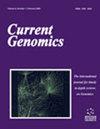基于全有丝分裂基因组的蚕科分类地位及系统发育关系
IF 1.4
4区 生物学
Q4 BIOCHEMISTRY & MOLECULAR BIOLOGY
引用次数: 0
摘要
背景:charadriiforma因其分布、行为、形态和生态的多样性,为研究进化提供了良好的资源。然而,在Charadrii中,家庭层面的关系仍然没有得到充分的研究,Charadrii科的单系性也是一个有争议的话题。方法:对leschenaultii Charadrius和mongolus Charadrius进行了完整的有丝分裂基因组测序,发现其长度分别为16,905 bp和16,844 bp。在13个蛋白质密码子基因中,我们观察到非同义取代率的变化,COI的速率最慢,ATP8的速率最快。所有种类的Ka/Ks比值均显著低于1,说明其蛋白编码基因存在纯化选择。结果:基于Cyt b、12S和ND2基因的系统发育分析表明,雨蝇属是血足科、舌足科、反刍病毒科3个科的姐妹群。然而,基于完整有丝分裂基因组的系统发育分析表明,雨蝇属属于雨蝇科。结论:这项研究强调了仔细选择用于获得物种树准确估计的基因数量的重要性。这也表明,依赖于快速进化速率的部分mtDNA基因可能会导致在解决Pluvialis姐妹群时产生误导性的结果。未来的研究应侧重于在不同的分类水平上对更多的有丝分裂基因组进行测序,以更好地了解charadriiforma目的特征和系统发育关系。本文章由计算机程序翻译,如有差异,请以英文原文为准。
Taxonomic Status and Phylogenetic Relationship of Family Charadriidae based on Complete Mitogenomes
Background: The Charadriiformes provide a good source for researching evolution owing to their diverse distribution, behavior, morphology, and ecology. However, in the Charadrii, family-level relationships remain understudied, and the monophyly of Charadriidae is also a subject of controversy. Method: In the present study, we generated complete mitogenomes for two species, Charadrius leschenaultii and Charadrius mongolus, which were found to be 16,905 bp and 16,844 bp in length, respectively. Among the 13 protein codon genes, we observed variation in the rate of nonsynonymous substitution rates, with the slowest rate found in COI and the fastest rate observed in ATP8. The Ka/Ks ratio for all Charadriidae species was significantly lower than one, which inferred that the protein-coding genes underwent purifying selection. Result: Phylogenetic analysis based on the genes of Cyt b, 12S and ND2 revealed that the genus Pluvialis is the sister group of three families (Haematopodidae, Ibidorhynchidae, Recurvirostridae). However, the phylogenetic analysis based on complete mitogenomes indicated that the genus Pluvialis is within the Charadriidae family. Conclusion: This study highlights the importance of carefully selecting the number of genes used to obtain accurate estimates of the species tree. It also suggests that relying on partial mtDNA genes with fast-evolving rates may lead to misleading results when resolving the Pluvialis sister group. Future research should focus on sequencing more mitogenomes at different taxonomic levels to gain a better understanding of the features and phylogenetic relationships within the Charadriiformes order.
求助全文
通过发布文献求助,成功后即可免费获取论文全文。
去求助
来源期刊

Current Genomics
生物-生化与分子生物学
CiteScore
5.20
自引率
0.00%
发文量
29
审稿时长
>0 weeks
期刊介绍:
Current Genomics is a peer-reviewed journal that provides essential reading about the latest and most important developments in genome science and related fields of research. Systems biology, systems modeling, machine learning, network inference, bioinformatics, computational biology, epigenetics, single cell genomics, extracellular vesicles, quantitative biology, and synthetic biology for the study of evolution, development, maintenance, aging and that of human health, human diseases, clinical genomics and precision medicine are topics of particular interest. The journal covers plant genomics. The journal will not consider articles dealing with breeding and livestock.
Current Genomics publishes three types of articles including:
i) Research papers from internationally-recognized experts reporting on new and original data generated at the genome scale level. Position papers dealing with new or challenging methodological approaches, whether experimental or mathematical, are greatly welcome in this section.
ii) Authoritative and comprehensive full-length or mini reviews from widely recognized experts, covering the latest developments in genome science and related fields of research such as systems biology, statistics and machine learning, quantitative biology, and precision medicine. Proposals for mini-hot topics (2-3 review papers) and full hot topics (6-8 review papers) guest edited by internationally-recognized experts are welcome in this section. Hot topic proposals should not contain original data and they should contain articles originating from at least 2 different countries.
iii) Opinion papers from internationally recognized experts addressing contemporary questions and issues in the field of genome science and systems biology and basic and clinical research practices.
 求助内容:
求助内容: 应助结果提醒方式:
应助结果提醒方式:


